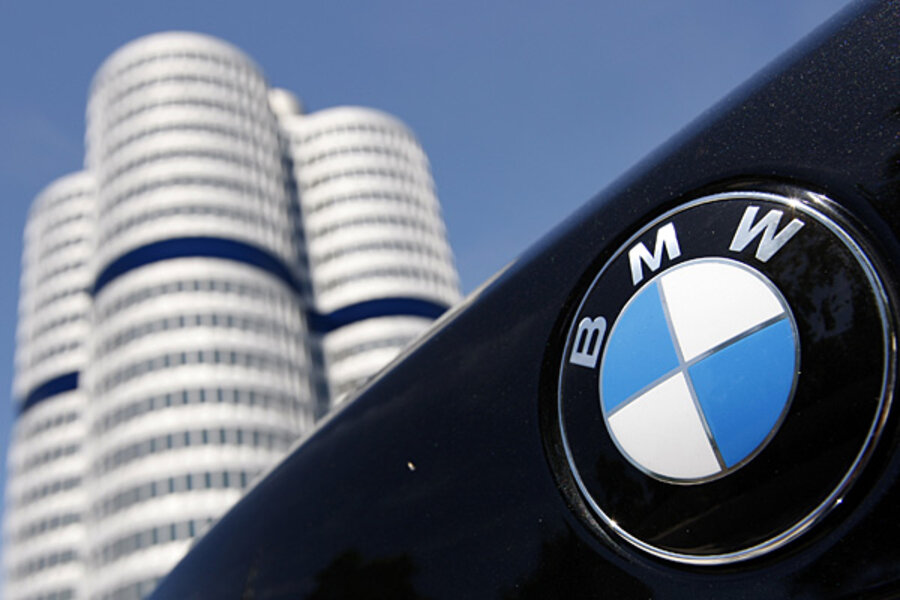Crash prevention systems in vehicles improving rapidly, IIHS finds
Loading...
It's probably fair to say that your next car likely won't be a Google car that can completely drive itself; but it might be one that could smartly brake itself that one time your attention lapses in traffic.
The feature is already arriving in many models, actually. According to the Insurance Institute for Highway Safety (IIHS), more than 20 percent of 2014 vehicle models now offer a front crash prevention system—one with automatic-braking capabilities.
That's twice the rate it was in 2012, the IIHS reports; and warning systems, minus the braking, are now optional in almost 40 percent of new vehicles.
And the good news is that these systems are working as they're supposed to. In a new round of testing, of 24 cars and SUVs, eight of them earn the highest ‘superior’ for accident avoidance. Another 13 of these tested vehicles earn an ‘advanced’ rating, while three models get the ‘basic’ rating.
So much better than last year
The news follows up on the organization's first across-the-board test of such forward collision prevention systems, last year, in which a number of models didn't do nearly as well.
Then, Subaru's EyeSight system in the Outback and Legacy topped all other models tested. That system maintains its high rating, but it now has more company with that top 'advanced' rating.
Last year, the organization found that a Toyota forward collision system in the Prius V failed to meet even the minimum standards for such a feature. But this year, Toyota has raised its ratings—the result of some significant improvements into that system, as well as the ones that go into the Highlander crossover and its Lexus vehicles.
BMW system is much-improved
“We are already seeing improvements from automakers since the initial launch of our ratings last September,” said David Zuby, IIHS executive vice president and chief research officer, noting that both BMW and Lexus have improved their ratings, at least in part, by braking capability to their systems.
BMW made some major gains in this year’s testing, with its X5, 5-Series, and 3-Series lines, as well as the 2-Series, now earning an ‘advanced’ rating when equipped with the new camera-only collision mitigation.
Of the 74 vehicles the IIHS tested last year, most of them carried luxury badges. However this year’s group of 24 different 2014 models included models from Buick, Chevrolet, Dodge, and Toyota.
GM, for instance, now offers a forward collision warning and auto-brake system in the Buick Regal, Cadillac CTS, and Chevrolet Impala; in those models it earned the ‘superior’ rating.
Three rating categories
The new test rates vehicles depending on whether or not auto-braking is offered, and then how effective it is at both 12 mph and 25 mph. If a vehicle can avoid a crash entirely, or substantially reduce speeds, then it earns the 'superior' designation. And if a vehicle can brake autonomously and can either completely avoid a crash or significantly reduce speeds in at least one of the two tests, it earns the top 'advanced' rating.
The IIHS also awards a 'basic' rating to vehicle systems with forward collision systems that meet the federal requirements but fail reduce speed significantly in either situation.
The ratings are given because of research showing that forward collision warning and automatic-braking systems do help drivers avoid front-to-rear crashes—and resulting injuries and possibly fatalities.
Bottom line: They'll reduce injuries, possibly fatalities
“The advantage of autobrake is that even in cases where a crash can’t be avoided entirely, the system will reduce speed,” said Zuby. “Reducing the speed reduces the amount of damage that occurs to both the striking and struck cars and reduces injuries to people in those cars.”
Some systems provide a warning to the driver before initiating braking, while others don’t; the agency indicates that this doesn’t affect a system’s ratings in this category.
Beginning next year, vehicles will need to achieve an advanced rating for front crash protection in order to make Top Safety Pick Plus (TSP+) status, while this year a ‘basic’ rating will suffice.
Here are the vehicles that include an ‘advanced’-rated system standard:
2014 Volvo S60
2014 Volvo S80
2014 Volvo XC60
And here are the models that include a ‘basic’-rated system standard:
2014 Acura RLX
2014 Acura ZDX
2014 Mercedes-Benz CLA
2014 Mercedes-Benz E-Class
2014 Mercedes-Benz M-Class







